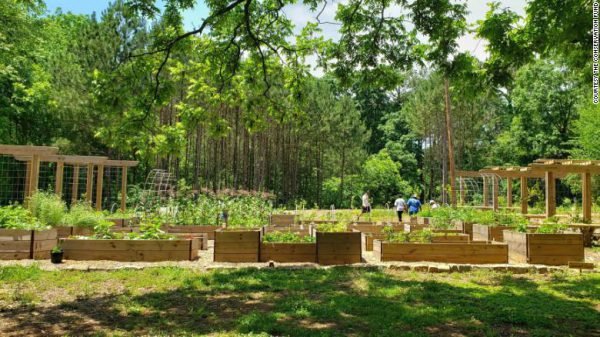America’s largest food forest has come to life, thanks to a US Forest Service grant and a collaboration between the city of Atlanta, the Conservation Fund – a nonprofit organization with a dual charter to pursue environmental preservation and economic development, and Trees Atlanta – a non-profit that addresses Atlanta’s tree loss, protects its forests, and creates new green space.
A whopping 7.1 acres of land in the Browns Mill neighborhood of southeast Atlanta has been converted to a community urban food forest.
The forest will produce about 2,500 pesticide-free edible and medicinal plants, including a wide range of fresh, flavorful, and healthy nuts, fruits, vegetables, herbs, and mushrooms, which will become available for public consumption.
With the primary purpose of reducing food insecurity, this forest is part of the city of Atlanta’s larger mission to bring salubrious food products within half a mile of 85 per cent of Atlanta’s 500,000 residents by 2022.
“Access to green space and healthy foods is very important. And that’s a part of our mission,” says Michael McCord, a certified arborist and expert edible landscaper who helps manage the forest.
Owned by the parks department, the forest witnesses over 1,000 volunteers helping to plant and maintain it. The forest, however, was earlier a small family farm that would cater to only the neighborhood by providing nourishing food.
It uses the concept of ‘Agriforestry,’ which is using agriculture that integrates trees and shrubs with food production to create healthy and ecologically resilient landscapes, to approach its conservation efforts. This concept follows the idea of using indigenous plants to produce healthy food along with providing local wildlife with resources to create a sustainable urban landscape.
However, apart from the fresh and health food, this forest provides a host of other benefits for the community residents. For instance, the walking trails in the forest provide residents with opportunities to pursue exercising and recreational activities, like birdwatching and foraging. Moreover, students and residents can be involved in volunteer service for the betterment of the entire community. And, there cannot be anything better than neglected land being used to provide a safe and hygienic place for children to play!
Isn’t this just a fantastic example of how the community and the local authorities can collaborate to bring about a win-win situation for everyone?
0